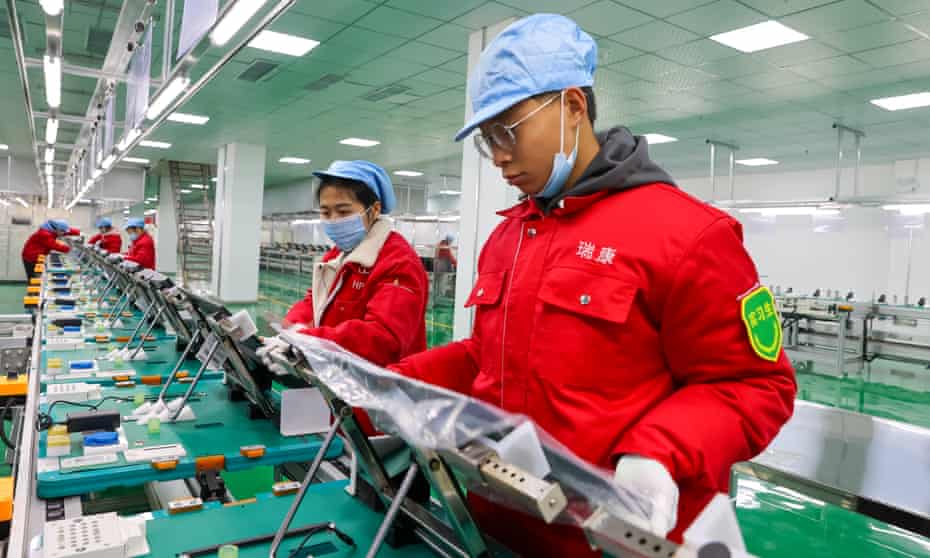 Output from China’s manufacturing sector slowed to its weakest in almost two years in January as the country’s tough anti-Covid measures forced factories into temporary shutdowns.
Output from China’s manufacturing sector slowed to its weakest in almost two years in January as the country’s tough anti-Covid measures forced factories into temporary shutdowns.
A monthly snapshot of industry in the world’s second biggest economy showed production being hard hit by Beijing’s zero-tolerance approach to the pandemic.
The Caixin/Markit purchasing managers’ index dropped from 50.9 in December to 49.1 in January – putting pressure on China’s policymakers to step up support for the flagging economy.
A reading below 50 suggests output is contracting rather than expanding, with January’s figure the weakest since February 2020, when blanket restrictions were in force during the first wave of the Covid-19 virus.
Wang Zhe, a senior economist at Caixin Insight Group, said: “Over the past month, there were Covid-19 flare-ups in several regions in China, underscoring the downward pressure on the economy.
“Both supply and demand in the manufacturing sector weakened. Several regions tightened epidemic control measures following the resurgence, which impacted production and sales of manufactured goods. The subindexes for output and total new orders in January fell to their lowest since August. Overseas demand shrank at an even faster pace.”
Wang said the spread of the Omicron variant overseas hit China’s external demand, with the gauge for new export orders in January the lowest in 20 months.
Craig Botham, the chief China economist at Pantheon Macro, said: “A spike in Covid cases – a mix of Delta and Omicron – is the primary driver of the slowdown in January, along with factory closures ahead of the lunar new year holiday, and a smattering of production limits to limit air pollution during the Winter Olympics.”
Meanwhile, growth figures for the eurozone showed output in the single currency zone has returned to pre-pandemic levels.
According to the EU’s statistical agency, Eurostat, gross domestic product in the eurozone rose by 0.3% in the final three months and by 5.2% in 2021 as a whole. The quarterly growth rate eased from the 2.3% recorded in the third quarter, following the reintroduction of restrictions to slow the spread of the virus.
A breakdown by country found a marked divergence in growth, with the eurozone’s biggest economy, Germany, contracting by 0.7%, while France, Italy and Spain – the next largest – all expanded.
France grew by 0.7% in the final three months of 2021, Italy by 0.6% and Spain by 2%. Fourth-quarter growth figures for the UK have yet to be released.
Source: The Guardian